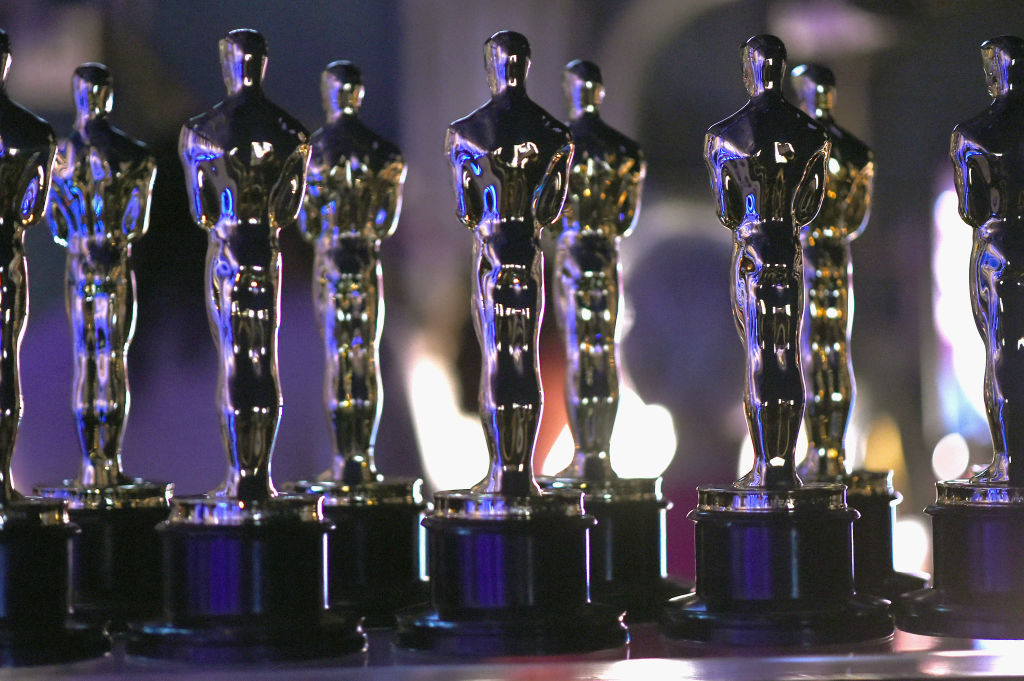
In 2015, the hashtag #OscarsSoWhite went viral as a criticism of the lack of inclusion in Hollywood films. Not only was Selma‘s Ava duVernay missing from the best director category and its star David Oyelowo overlooked as a lead actor contender, every single performer in the acting categories was white. Now as we consider another Oscars ballot that largely overlooks the work of people of color – the acting nominees are almost all white and Lulu Wang’s critically acclaimed The Farewell was shut out entirely — it’s painful to point out how relevant that hashtag still is, not just for Hollywood, but for the entire media industry.
It’s not as if anyone expected the issue to be “solved” in just a few years, and it is certainly a good thing that the need for racial diversity—in Hollywood, in the media, in life—is at the fore of our consciousness now more than ever before. But it is worth considering just how long people of color have had to demand better representation.
Emma L. Bowen was one of them. In 1960s New York City, Bowen, a young black woman, was fighting for the rights of minorities, particularly young people. As a mental health professional and community activist, Bowen worked to ensure that young people of color had access to the same opportunities as their white counterparts. She organized the Citizens Action for Neighborhood Organization (CAN-DO) to bring together tenants, landlords and city housing officials to seek ways to improve living conditions for marginalized communities. She worked with New York Sen. Jacob Javits to end the unwritten policy of preventing black youth from being pages in the U.S. Senate. And she cared deeply about the portrayal of minorities in the news media.
It was a time when Leave It to Beaver represented the idealized standard of the American family, The Andy Griffith Show provided wholesome comic relief depicting the life of a widowed, small-town sheriff and Hawaii Five-O followed Detective Steve McGarrett as he solved the crimes of the day. People of color were in the background or the source of conflict in these shows and many others. They weren’t the heroes, and stories weren’t told from their perspective.
The same was true for cultural representation in the news. People of color were the subjects of the news—not the ones delivering it. They didn’t have the opportunity to report on the world and their community as they saw it. White reporters would go into these neighborhoods and paint stark portraits of life as a person of color. Black people were particularly shown as uneducated and trapped in a cycle of poverty. They were the looters and drug dealers who committed crimes in less-than-desirable neighborhoods.
And that was not something Bowen was going to stand for. As an African American woman and as a widowed mother of three, she wanted minorities’ stories of hard work and triumph to be told as loudly and clearly as anyone else’s. She understood that if left unchallenged, these negative and distorted narratives of people of color would have a devastating impact on the next generation.
In 1971, Bowen joined with a group of community activists to form Black Citizens for a Fair Media (BCFM), which went directly to media executives at major networks, New York City-based flagship television stations and major station groups to develop new initiatives that promoted diverse hiring and training, created community affairs positions to better relationships between the media and local communities, and made efforts to improve the representation of people of color on television. When some stations refused to meet with BCFM, the organization responded by filing challenges to the renewal of their broadcast licenses with the FCC. At one point, as she prepared for a legal battle with public television producers and broadcasters, Bowen said, “The most effective way to make public TV respond and change is to take it to court.”
But it wasn’t enough for her to try to change things for those already in the industry. Bowen knew that in order to have lasting change she also needed to look to the next generation. In 1989, with the help of Rev. Dr. Everett Parker— who, as director of the Office of Communication of the United Church of Christ, used his office to fight for civil rights for 30 years—and broadcast executive Dan Burke, she launched the Emma Bowen Foundation to give talented students of color the opportunity to intern at some of the nation’s leading media, PR and technology companies. (Today, the foundation partners with more than 65 companies, including TIME.)
Like so many who fought this fight before her, Bowen knew that inclusion should not be optional. She knew what we see on our screens should reflect the reality of our world, and that could only be possible if people from different backgrounds could bring their own experiences to the work and have these contributions valued.
Today it is no longer enough to collectively understand that inclusion is the right thing to do; it is quite literally what the market demands. A 2017 study found evidence that diverse casting boosts box office numbers. And as the demographics of our country continue to shift – the majority of the country is projected to be non-white within 25 years – it’s more important than ever that we refuse to stand for the status quo.
If Emma Bowen could demand better more than a half century ago, certainly we can do so today.
More Must-Reads from TIME
- How Donald Trump Won
- The Best Inventions of 2024
- Why Sleep Is the Key to Living Longer
- Robert Zemeckis Just Wants to Move You
- How to Break 8 Toxic Communication Habits
- Nicola Coughlan Bet on Herself—And Won
- Why Vinegar Is So Good for You
- Meet TIME's Newest Class of Next Generation Leaders
Contact us at letters@time.com